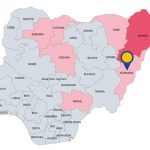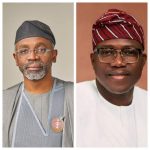World
Energy Research Platform Takes Central Stage under Russia’s BRICS Chairmanship
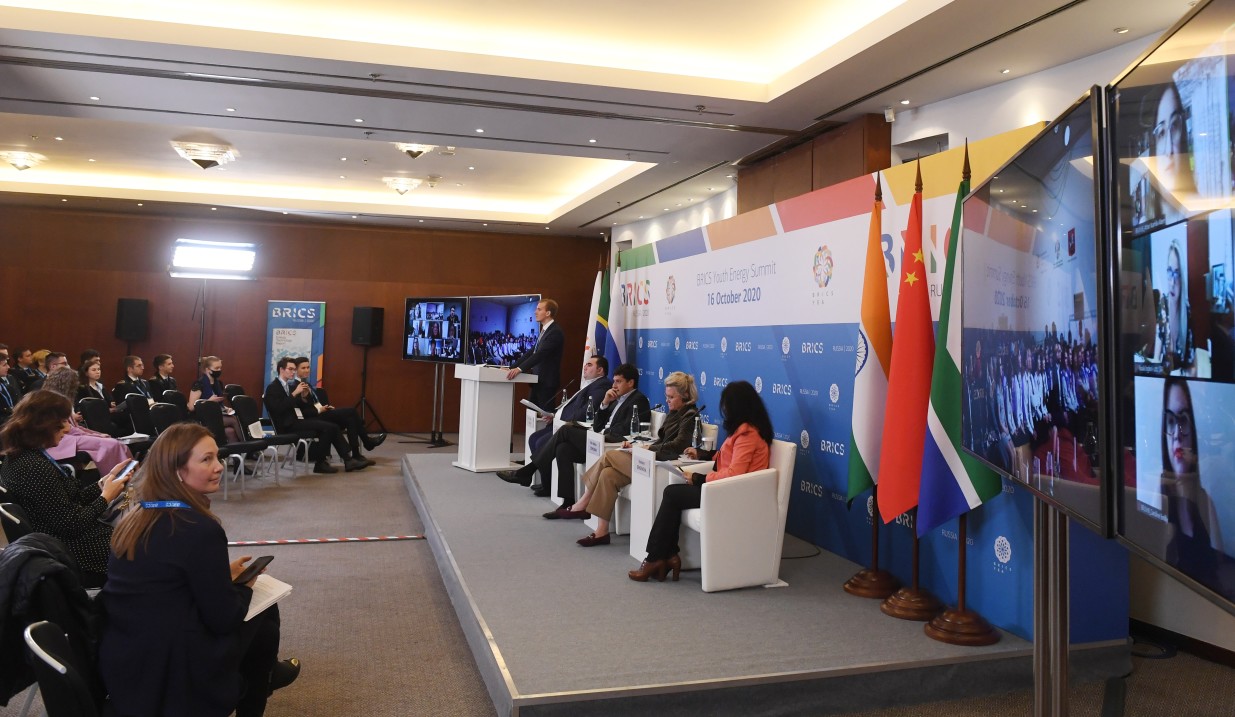
By Kester Kenn Klomegah
After the Ufa declaration in 2015, BRICS, an association of five major emerging economies that includes Brazil, Russia, India, China and South Africa, has made energy cooperation one of its priorities besides attaining an admirable significant influence on regional affairs and very active on the global stage.
That 7th summit held in July in the Russian provincial city of Ufa in Bashkortostan, under Russia’s initiative the BRICS adopted the key guideline for expanding among many other spheres, development of energy cooperation, bridging the scientific and technological gap, as well as finding solutions to the challenges in the energy sector among the members.
The Ufa Declaration (point 69) states “Recognizing the importance of monitoring global trends in the energy sector, including making forecasts regarding energy consumption, providing recommendations for the development of energy markets in order to ensure energy security and economic development, we call on our relevant agencies to consider the possibilities of energy cooperation within BRICS.”
“Taking into consideration the role of the energy sector in ensuring the sustainable economic development of the BRICS countries, we welcome balancing the interests of consumers, producers and transit countries of energy resources, creating the conditions for sustainable and predictable development of the energy markets,” it further stated.
Worth to remind here that it was Russia’s proposal to hold the first meeting of the BRICS Ministers of Energy during the fourth quarter of 2015.
While reaffirming the importance and necessity of advancing international cooperation in the field of energy-saving, energy efficiency and developing energy-efficient technologies, the BRICS look forward to developing intra-BRICS cooperation in this area, as well as the establishment of the relevant platform.
In 2020, Russia holds the rotating chair of BRICS. BRICS has neither a secretariat nor a charter. The country that chairs BRICS organizes the group’s summit and coordinates its current activities. Russia has been holding a series of conferences focusing on different directions.
In mid-October, the BRICS Energy Ministers held their meeting and approved a roadmap for cooperation in the energy sphere that runs until 2025. Due to coronavirus pandemic, it was video conference chaired by Russian Energy Minister Alexander Novak.
The influence of BRICS nations on the international arena is increasing due to the increasing economic power of the participating states, and it is imperative for them to coordinate their positions in energy cooperation, Minister Novak said during the meeting.
“Today, the BRICS nations represent nearly one-fourth of global GDP and over a third of global consumption and production of energy. In this regard, it is very important to coordinate the positions of our nations where we have common interests and speak from a unified position in global platforms which concern themselves with matters of international energy cooperation,” he said.
“We have already begun to implement this idea in practice. Our nations have launched informal consultations on the sidelines of the G20 and on the sidelines of the World Energy Council. Beginning our work this year, we have collectively determined three key vectors of the energy dialogue.
These are the support for the development of the national energy systems of BRICS nations, technological cooperation and facilitation of improved terms for investment in energy, contributing to the stability of energy markets and increasing the role of BRICS in the global energy dialogue,” Novak emphasized.
The roadmap adopted at the end of the meeting is the first comprehensive document that sets out agreed plans for the development of the energy dialogue between the five countries. The meeting also issued a communiqué confirming the intention to strengthen their strategic partnership in the energy sector and the area of energy security and noting the important role of all types of energy, including fossil fuels and nuclear power.
The ministers affirmed that energy transition should correspond to national conditions and each country should determine the optimal policy without being compelled to adopt models that do not fit BRICS countries, according to the Russian ministry statement.
On October 15, Moscow hosted the first Annual Meeting of the BRICS Energy Research Platform, where analytical reports by the BRICS countries presented. That was followed by the largest youth energy event in BRICS.
This year, delegations from all five countries comprised of representatives of Line Agencies responsible for the implementation of energy and youth policies as well as over 150 young scientists and experts from 40 leading universities and industrial organizations took part in the summit.
According to surveys conducted by the VTsIOM, Russian public opinion research centre, the number of families that have been taught to save energy has doubled over the past five years. That the BRICS countries are taking part in the #TogetherBrighter International Energy Saving Festival, as part of the BRICS Energy Week (October 16 – 20) was a landmark event of Russia’s BRICS Chairmanship.
Notably, the Energy Research Platform designed to encourage the research community’s involvement in the practical activities on drawing up energy resource plans. Two major events took place as part of the Energy Research Platform. The results submitted for consideration by the heads of state for effective industrial interaction and practical cooperation in developing and implementing new joint energy.
Based on national statistics and forecasts, leading BRICS experts have prepared the “BRICS Energy Report” – a review of the energy sectors in the five countries, and the “BRICS Energy Technology Report” – focuses on the priorities of technological development of the fuel and energy sectors in BRICS. The reports came from leading experts, representatives of major research institutes and energy companies from the BRICS countries as well as international energy organizations, such as OPEC, GECF, the World Energy Forum, the Clean Energy Ministerial and the World Energy Council.
In September, Foreign Minister Sergey Lavrov held an online meeting of the BRICS Foreign Ministers Council in Moscow. That was second of such meetings this year under Russia’s chairmanship. The first one was dedicated exclusively to mobilizing efforts to prevent the spread of the coronavirus infection.
Within an updated Strategy for BRICS Economic Partnership to 2025, Russia has drawn proposals on developing a new mechanism for the five member’s interaction in securing sustainable economic development in the post-pandemic age.
The theme of the Meeting of the Leaders of BRICS countries is “BRICS Partnership for Global Stability, Shared Security and Innovative Growth” which is planned for November 17 via videoconference, to be coordinated and moderated in Moscow. This year the five countries have continued close strategic partnership on all the three major pillars: peace and security, economy and finance, cultural and people-to-people exchanges.
“Despite the current global situation due to the spread of the coronavirus infection, the activities under the Russian BRICS Chairmanship in 2020 are carried out in a consistent manner. Since January 2020, more than 60 events have been organized, including via videoconferencing. The BRICS Summit will provide an impetus for further strengthening cooperation together with our partners and ensure the well-being of BRICS countries,” – noted Anton Kobyakov, Adviser to the President of the Russian Federation, Executive Secretary of the Organizing Committee to Prepare and Support Russia’s SCO Presidency in 2019 – 2020 and BRICS Chairmanship in 2020.
Since 2009, the BRICS nations have met annually at formal summits, with Brazil having hosted the most recent 11th BRICS Summit in November 2019. Russia is pushing forward significant issues of five-sided cooperation in the bloc’s three areas of strategic partnership: policy and security, economy and finance, and cultural and educational cooperation. The five BRICS countries together represent over 3.1 billion people or about 41 per cent of the world population.
Kester Kenn Klomegah writes frequently about Russia, Africa and the BRICS
World
Comviva Wins at IBSi Global FinTech Innovation Award
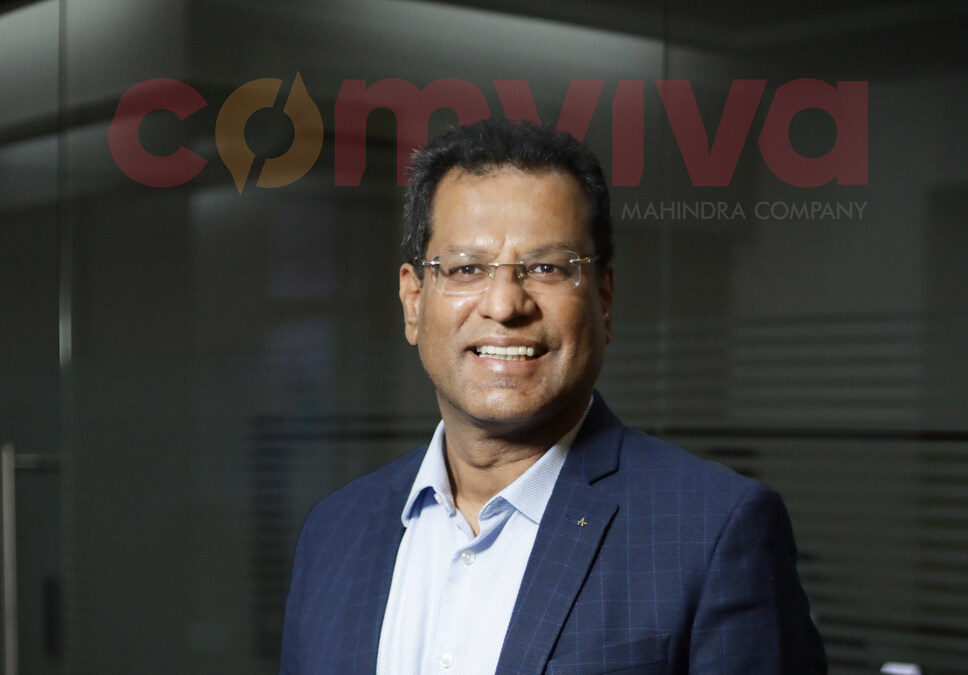
By Modupe Gbadeyanka
For transforming cross-border payments through its deployment with Global Money Exchange, Comviva has been named Best In-Class Cross Border Payments.
The global leader in digital transformation solutions clinched this latest accolade at the IBS Intelligence Global FinTech Innovation Award 2025.
The recognition highlights how Comviva’s mobiquity Pay is helping shape a modern cross-border payment ecosystem that stretches far beyond conventional remittance services.
Deployed as a white label Wallet Platform and launched as Global Pay Oman App, it fulfils GMEC’s dual vision—positioning itself as an innovative payment service provider while digitally extending its core money transfer business.
The solution allows GMEC to offer international money transfers alongside seamless forex ordering and other services. These capabilities sit alongside a broad suite of everyday financial services, including bill and utility payments, merchant transactions, education-related payments, and other digital conveniences — all delivered through one unified experience.
“This award is a testament to Oman’s accelerating digital transformation and our commitment to reshaping how cross-border payments serve people and businesses across the Sultanate.
“By partnering with Comviva and bringing the Global Pay Oman Super App, we have moved beyond traditional remittance services to create a truly inclusive and future-ready financial ecosystem.
“This innovation is not only enhancing convenience and transparency for our customers but is also supporting Oman’s broader vision of building a digitally empowered economy,” the Managing Director at Global Money Exchange, Subromoniyan K.S, said.
Also commenting, the chief executive of Comviva, Mr Rajesh Chandiramani, said, “Cross-border payments are becoming a daily necessity, not a niche service, particularly for migrant and trade-linked economies.
“This recognition from IBS Intelligence validates our focus on building payment platforms that combine global reach with local relevance, operational resilience and a strong user experience. The deployment with Global Money Exchange Co. demonstrates how mobiquity® Pay enables financial institutions to move beyond remittances and deliver integrated digital services at scale.”
“The deployment of mobiquity Pay for GMEC showcases how scalable, API-driven digital wallet platforms can transform cross-border payments into seamless, value-rich experiences.
“By integrating remittances, bill payments, forex services, and AI-powered engagement into a unified Super App, Comviva has reimagined customer journeys and operational agility.
“This Best-in-Class Cross-border Payments award win stands as a testament to Comviva’s excellence in enabling financial institutions to compete and grow in a digitally convergent world,” the Director for Research and Digital Properties at IBS Intelligence, Nikhil Gokhale, said.
World
Russia Renews Africa’s Strategic Action Plan
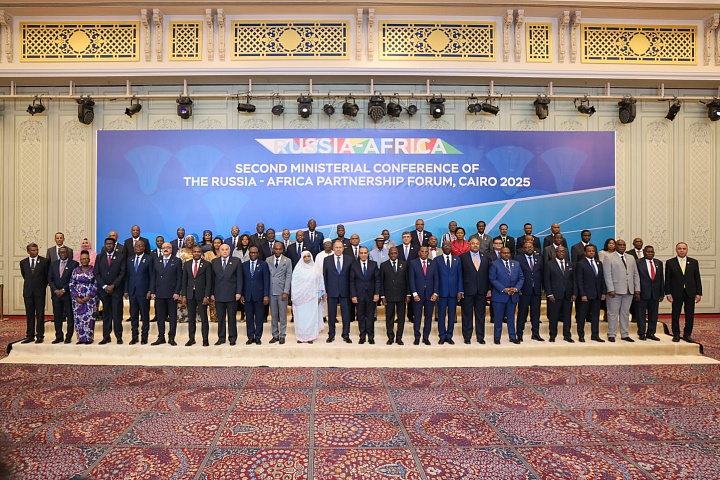
By Kestér Kenn Klomegâh
At the end of an extensive consultation with African foreign ministers, Russian Foreign Minister, Sergey Lavrov, has emphasized that Moscow would advance its economic engagement across Africa, admittedly outlining obstacles delaying the prompt implementation of several initiatives set forth in Strategic Action Plan (2023-2026) approved in St. Petersburg during the Russia-Africa Summit.
The second Ministerial Conference, by the Russian Foreign Ministry with support from Roscongress Foundation and the Arab Republic of Egypt, marked an important milestone towards raising bilateral investment and economic cooperation.
In Cairo, the capital city of the Arab Republic of Egypt, Lavrov read out the final resolution script, in a full-packed conference hall, and voiced strong confidence that Moscow would achieve its strategic economic goals with Africa, with support from the African Union (AU) and other Regional Economic blocs in the subsequent years. Despite the complexities posed by the Russia-Ukraine crisis, combined with geopolitical conditions inside the African continent, Moscow however reiterated its position to take serious steps in finding pragmatic prospects for mutual cooperation and improve multifaceted relations with Africa, distinctively in the different sectors: in trade, economic and investment spheres, education and culture, humanitarian and other promising areas.
The main event was the plenary session co-chaired by Russian Foreign Minister Sergey Lavrov and Egyptian Minister of Foreign Affairs, Emigration, and Egyptians Abroad Bashar Abdelathi. Welcome messages from Russian President Vladimir Putin and Egyptian President Abdelhak Sisi were read.
And broadly, the meeting participants compared notes on the most pressing issues on the international and Russian-African agendas, with a focus on the full implementation of the Russia-Africa Partnership Forum Action Plan for 2023-2026, approved at the second Russia-Africa Summit in St. Petersburg in 2023.
In addition, on the sidelines of the conference, Lavrov held talks with his African counterparts, and a number of bilateral documents were signed. A thematic event was held with the participation of Russian and African relevant agencies and organizations, aimed at unlocking the potential of trilateral Russia-Egypt-Africa cooperation in trade, economic, and educational spheres.
With changing times, Africa is rapidly becoming one of the key centers of a multipolar world order. It is experiencing a second awakening. Following their long-ago political independence, African countries are increasingly insisting on respect for their sovereignty and their right to independently manage their resources and destiny. Based on these conditions, it was concluded that Moscow begins an effective and comprehensive work on preparing a new three-year Cooperation and Joint Action Plan between Russia and Africa.
Moreover, these important areas of joint practical work are already detailed in the Joint Statement, which was unanimously approved and will serve as an important guideline for future work. According to reports, the Joint Statement reflects the progress of discussions on international and regional issues, as well as matters of global significance.
Following the conference, the Joint Statement adopted reflects shared approaches to addressing challenges and a mutual commitment to strengthening multifaceted cooperation with a view to ensuring high-quality preparation for the third Russia-Africa Summit in 2026.
On December 19-20, the Second Ministerial Conference of the Russia-Africa Partnership Forum was held in Cairo, Egypt. It was held for the first time on the African continent, attended by heads and representatives of the foreign policy ministries of 52 African states and the executive bodies of eight regional integration associations.
World
TikTok Signs Deal to Avoid US Ban

By Adedapo Adesanya
Social media platform, TikTok’s Chinese owner ByteDance has signed binding agreements with United States and global investors to operate its business in America.
Half of the joint venture will be owned by a group of investors, including Oracle, Silver Lake and the Emirati investment firm MGX, according to a memo sent by chief executive, Mr Shou Zi Chew.
The deal, which is set to close on January 22, 2026 would end years of efforts by the US government to force ByteDance to sell its US operations over national security concerns.
It is in line with a deal unveiled in September, when US President Donald Trump delayed the enforcement of a law that would ban the app unless it was sold.
In the memo, TikTok said the deal will enable “over 170 million Americans to continue discovering a world of endless possibilities as part of a vital global community”.
Under the agreement, ByteDance will retain 19.9 per cent of the business, while Oracle, Silver Lake and Abu Dhabi-based MGX will hold 15 per cent each.
Another 30.1 per cent will be held by affiliates of existing ByteDance investors, according to the memo.
The White House previously said that Oracle, which was co-founded by President Trump’s supporter Larry Ellison, will license TikTok’s recommendation algorithm as part of the deal.
The deal comes after a series of delays.
Business Post reported in April 2024 that the administration of President Joe Biden passed a law to ban the app over national security concerns, unless it was sold.
The law was set to go into effect on January 20, 2025 but was pushed back multiple times by President Trump, while his administration worked out a deal to transfer ownership.
President Trump said in September that he had spoken on the phone to China’s President Xi Jinping, who he said had given the deal the go ahead.
The platform’s future remained unclear after the leaders met face to face in October.
The app’s fate was clouded by ongoing tensions between the two nations on trade and other matters.
-

 Feature/OPED6 years ago
Feature/OPED6 years agoDavos was Different this year
-
Travel/Tourism9 years ago
Lagos Seals Western Lodge Hotel In Ikorodu
-

 Showbiz3 years ago
Showbiz3 years agoEstranged Lover Releases Videos of Empress Njamah Bathing
-

 Banking8 years ago
Banking8 years agoSort Codes of GTBank Branches in Nigeria
-

 Economy3 years ago
Economy3 years agoSubsidy Removal: CNG at N130 Per Litre Cheaper Than Petrol—IPMAN
-

 Banking3 years ago
Banking3 years agoFirst Bank Announces Planned Downtime
-

 Banking3 years ago
Banking3 years agoSort Codes of UBA Branches in Nigeria
-

 Sports3 years ago
Sports3 years agoHighest Paid Nigerian Footballer – How Much Do Nigerian Footballers Earn







